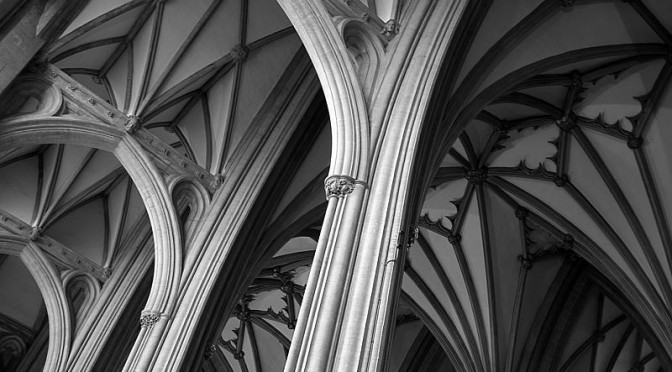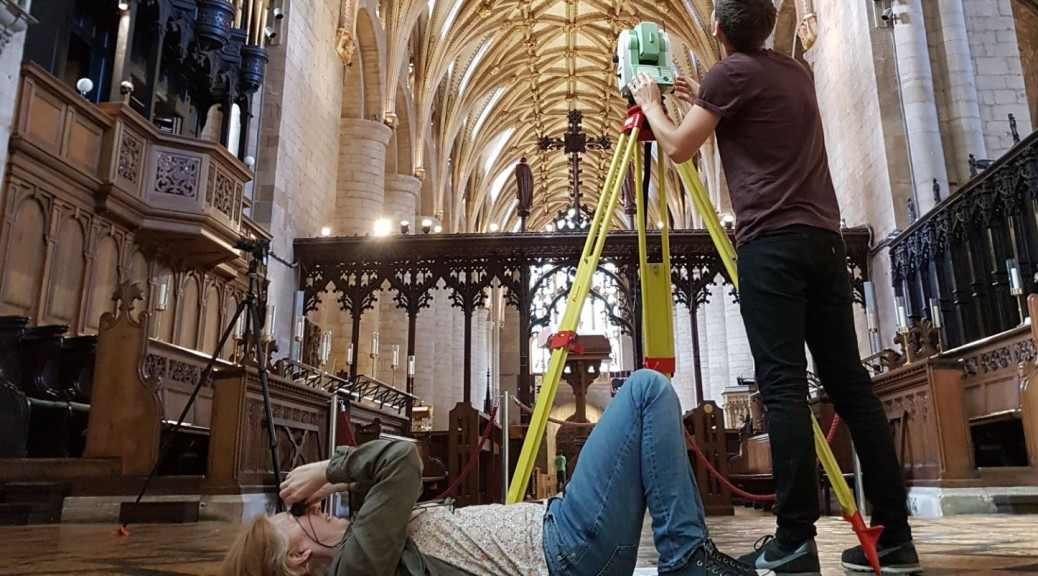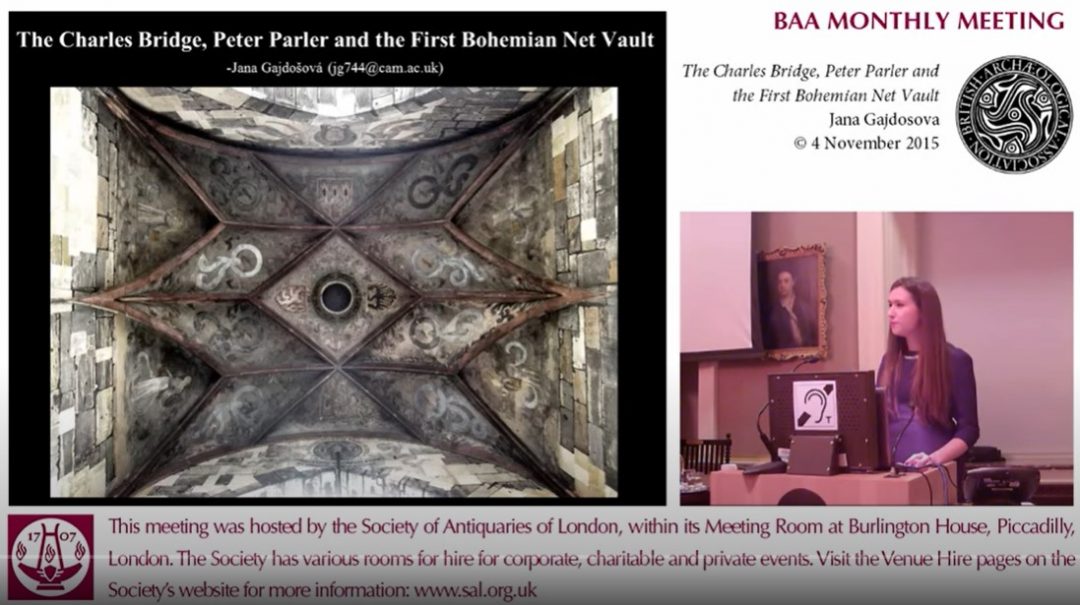On Saturday 20 March, Alex went to London to attend a study day at the Courtauld Institute, organised by the British Archaeological Association and the Ancient Monuments Society to commemorate Richard K. Morris (1943- 2015), whose work on Decorated architecture in England is very relevant to our project. Richard specialised in the detailed archaeological analysis which is an essential counterpart to our own research and specialised in the study of West Country buildings. His methodology involved the use of mouldings to reconstruct both building chronologies and the careers of individual masons and offered readings of such buildings as Wells Cathedral, Exeter Cathedral, St Augustine’s Abbey at Bristol, Tewkesbury Abbey and Sherborne Abbey, all of which have significant vaults.
The study day offered a varied programme including both new and established scholars. Of particular interest for our project were papers by James Cameron and Peter Draper which discussed medieval architectural drawings: both those which survive (a huge archive of drawings cut on the rocks around an 11th-century temple in Bhojpur, India) and those whose one-time existence might be suggested by the evidence of buildings whose detailed similarities are hard to explain.
Another relevant paper by James Hillson discussed the lierne vault of St Stephen’s Chapel Westminster, which he identifies as a design of the 1340s, rather than the 1290s as most previous interpretations have suggested. The problem is compounded by the loss of the original vaults after the fire at the Palace of Westminster in 1834, although detailed drawings were made and measurements taken by architect Charles Barry and communicated to Robert Willis for his research. If Hillson is right, this redating would mean that the Westminster designs can no longer be identified as the earliest true lierne vault and its relationship with other lierne vaults, such as those at Exeter, Bristol and Wells could be reversed, for the lierne vaults at Wells date from around 1330 and those at Exeter are earlier. The dating of the Bristol vaults remains a matter of controversy, into which Hillson opted not to wade.
Finally, vaults made a virtuoso appearance in a paper by Andrew Budge, who spoke on the chancel at St Mary’s Warwick, which has a tierceron vault with additional ‘skeleton’ ribs. Although Budge drew attention to a number of English examples of such vaulting, at St Augustine’s Bristol, the pulpita (screens) of St David’s Cathedral and Southwell Minster, the Easter Sepulchre of Lincoln Cathedral, stairway vaults at Thornton Abbey and Wells Cathedral and around the apse of Peterborough Cathedral, he also pointed out their existence in the so-called ‘tonsura’ at Magdeburg Cathedral. It was suggested that Thomas Beauchamp, 11th Earl of Warwick (1313-1369), who was buried in the chancel, might have visited Magdeburg en route to or from crusading activities and that the inclusion of skeleton vaults above his tomb might therefore represent an aspect of a ‘biography’ in stone. This of course offers some of the same problems about knowledge transfer as had already been addressed by James Cameron in relation to near-duplicate designs for sedilia. Whatever their meaning, these vaults amply demonstrate the exuberant inventiveness of architects of the Decorated period, whose methods we are seeking to explore.
Overall the day offered a wonderful opportunity to pay tribute to the work and influence of a kind and generous scholar with exemplary commitment both to his subject and to future scholarship.


